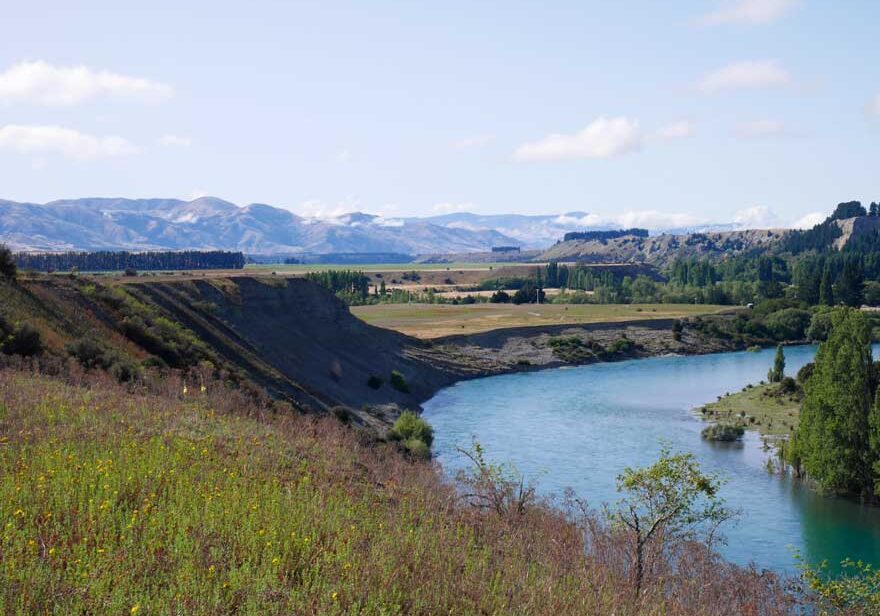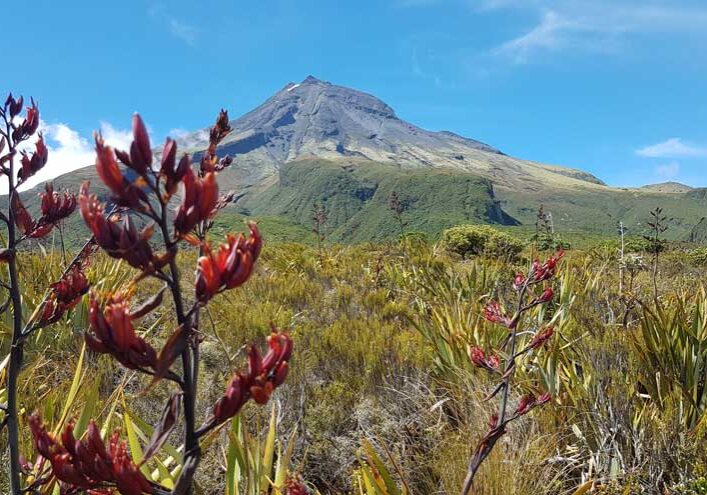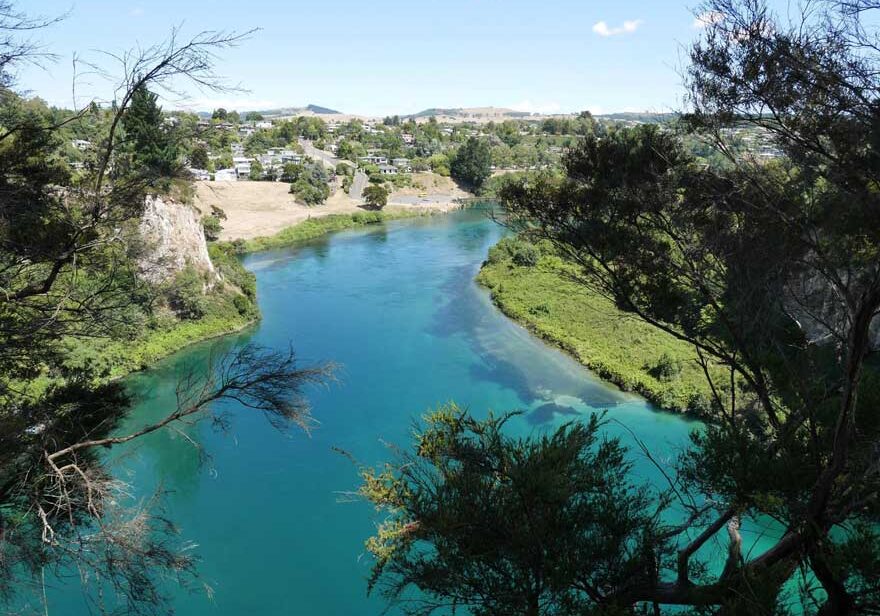Other
Biogeomorphology: Interactions between life and landscapes
Jana Eichel1, Annegret Larsen2, David Eldridge3
1Utrecht University, Utrecht, Netherlands, 2Wageningen University, Netherlands, 3University of New South Wales, Sydney, Australia
Landscapes are shaped by geomorphic processes, but also provide habitats for plants, animals and other life. Close interactions between life and geomorphic processes structure many geomorphologically dynamic landscapes, such as glacier forelands, rivers, deltas, saltmarshes, mangrove coasts and coastal dunes. Yet, many of those ‘biogeomorphic’ feedbacks are still not fully understood and poorly quantified. As many geomorphologically dynamic landscapes are under pressure from climate and land use changes, unravelling and quantifying those biogeomorphic feedbacks becomes more and important. This will help to develop nature-based solutions (NbS) and to safeguard geo- and biodiversity as well as linked ecosystem functions and services.
Our biogeomorphology session integrates all “green” contributions on plants, animals and ecosystem processes interacting with geomorphic processes, landforms and materials across themes in the scientific programme. We bring together researchers working on biogeomorphic feedbacks from individual organisms to global scales, from the mountains to the sea, together with researchers and practitioners applying those feedbacks. Thus, we solicit contributions of fundamental research on biogeomorphic feedbacks in all environments, as well as studies applying those feedbacks to manage and protect landscapes and ecosystems. Topics may include but are not limited to biogeomorphic processes, rates and feedbacks, organism-habitat interaction, role of plant traits, biota as ecosystem engineers, and biogeomorphology as a tool to sustainably manage natural systems and hazards. Innovative investigative techniques such as artificial intelligence, field and laboratory tests, remote sensing and numerical modelling or a combination thereof providing new perspectives on the life and landscape interactions are warmly welcomed.
Geoarchaeology: Interactions between people and the environment
Professor Jasper Knight1, Professor Dominic Stratford1,2, Professor Kathleen Nicoll3
1University of The Witwatersrand, Johannesburg, South Africa, 2Stony Brook University, New York, USA, 3University of Utah, Salt Lake City, USA
Geoarchaeological research can inform the interplay between human societies, environmental resources and landscapes, and how societies have adapted to climate changes in the past. This can take place in a range of environmental and geomorphic settings and climates. This session seeks to explore different case studies of changing human-environment interactions through geoarchaeological records developed during the late Pleistocene and Holocene. Evidence may include geomorphology, sedimentology, palaeoecology, archaeology, geochemistry, dating, fauna, and modelling. Contributions are invited from different sites globally that illustrate human-environment interactions, especially those that exemplify human adaptations to changing and/or marginal environments.
Harnessing Geomorphology for Effective Environmental Restoration: Bridging Science and Practice
Martin Thoms1, Andrew Brooks2
1The University of New England, Australia, 2Griffith University, Australia
In an era where environmental degradation and climate change are accelerating, the need for sustainable restoration solutions has never been more urgent. Geomorphology offers a unique lens through which we can understand and restore landscapes, river systems, wetlands, and coastal zones by working with natural processes. This session will explore fundamental principles of geomorphology, focusing on how insights of landform and ecosystem processes, sediment and wood transport and flow dynamics can enhance restoration outcomes. By grounding restoration practices in a solid theoretical understanding of geomorphological systems, we can ensure more resilient and long-lasting environmental interventions.
The session will highlight case studies from diverse ecosystems, including river restoration, coastal resilience projects, and erosion control strategies. It will present cutting-edge research demonstrating how geomorphological assessments have been instrumental in designing restoration projects that not only improve ecosystem condition but also increase resilience to climate impacts like flooding, sea-level rise, and desertification. These studies will show how integrating geomorphological data into planning and execution phases can reduce project failures and enhance ecosystem recovery.
By bringing together geomorphologists, ecologists, and restoration practitioners, this session aims to bridge the gap between scientific research and applied restoration. In doing so, this session will provide a platform for knowledge exchange, equipping scientists with tools to address contemporary environmental challenges through a geomorphological approach.
Sediment-rich flows as extreme events: Triggers, dynamics, and environmental impacts
Dr Matt Westoby1, Dr Amy East2, Dr Greta Wells3, Dr Edwin Baynes4
1School of Geography, Earth and Environmental Sciences, University Of Plymouth, Plymouth, United Kingdom, 2U.S. Geological Survey Pacific Coastal Marine Science Center, Santa Cruz, United States of America, 3Institute of Earth Sciences, University of Iceland, Reykjavik, Iceland, 4Geography and Environment, Loughborough University, Loughborough, United Kingdom
Extreme sediment-rich flows (SRFs) entrain, mobilise, and deposit vast quantities of sediment, have the potential to cause significant landscape change, and can have widespread environmental and societal impacts. Such events encompass hyperconcentrated flows, debris flows and floods, mudflows, lahars, and more. They can be triggered in a variety of ways, many of which can be climate-driven or conditioned. SRFs can represent (i) a major perturbation to the landscape, which can reset valley floors to a so-called ‘zero state’, (ii) a core or intermediate process within a wider hazard cascade, or (iii) a landscape response that can manifest sometime after a prior perturbation. SRF recovery can require a long timescale, involving re-establishment of fluvial connectivity, dispersion and/or translation of sediment pulses, and recovery of aquatic ecosystems. The timing and magnitude of SRFs and the time-scale over which a disturbance lasts can be highly unpredictable, presents a challenge for hazard practitioners, engineers, and communities.
Despite the anticipated increasing frequency and magnitudes of SRFs, driven to varying degrees by climate change, the generation of new knowledge surrounding these phenomena remains challenging. Many observational barriers that existed a century ago persist today, yet we have access to an increasing diversity of field- and remote-sensing based data, numerical and laboratory models, and AI- and machine learning enabled methods that can push the field forward.
We invite contributions which advance our understanding of SRF process-chains, including triggers, SRF dynamics and spatiotemporal evolution, or their immediate and longer-term geomorphic legacies and wider environmental impacts. We welcome case studies, especially where these lead to novel and broader insights. We also encourage contributions which showcase significant new methods, and those focusing on mitigation strategies aimed at managing SRF risks in a changing climate. Contributions that touch on multiple themes in a coherent and integrated manner are strongly encouraged.
Virtual geomorphology as a tool for education and promotion of geoheritage
Professor Arjen Peter Stroeven1, Professor Niki Evelpidou2, Dr. Anna Karkani2
1Stockholm University, Stockholm, Sweden, 2National and Kapodistrian University of Athens, Athens, Greece
Virtual geomorphology is a powerful educational tool for distance learning in geomorphology, including geohazards and geoheritage. Novel approaches with virtual reality for innovative ways of learning, now combine theory, practice, and activities that promote creative learning and active participation. We invite researchers to present their work on the development of virtual geomorphology, from geomorphological sites that would typically be inaccessible or unavailable to most people, including those engaged in the study of diverse geomorphic environments. We encourage the submission of novel approaches, methodologies, and techniques, including the use of three-dimensional animations and virtual reality, as well as research on learning with virtual reality. Topics include, but are not limited to, the following: landscapes, geomorphological phenomena; geomorphological hazards; promotion and preservation of geomorphological heritage; virtual geomorphology in higher education.



